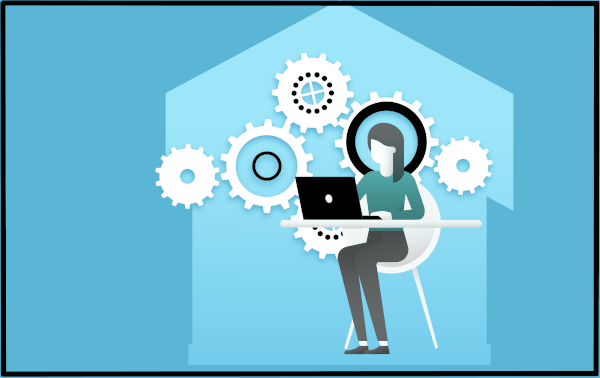
Today, many businesses are embracing digital technology to enable employees to work anywhere. The big stumbling block though is accountability.
With COVID-19 forcing many businesses to transition quickly to working from home policies, bosses can be concerned about lack of control over employees. Employees though have certainly enjoyed the opportunity and many want to keep doing it.
The good news is that the latest technology and products are even better today for managing remote employees.
Top Tools for Remote Work Accountability
Overall, employers need to trust their people. This is true whether they’re working on-site or from home. Still, for some supervisors, trust is easier with remote monitoring abilities.
Joint calendars are a common starting point. Microsoft 365, Google’s G Suite, and other tools allow staff to share calendars. People can still schedule personal appointments and keep those private, but the joint professional calendar lets everyone on a team stay in the know. Managers can go online to track sales meetings, client presentations, or team sessions.
Office 365 / Microsoft 365 offer a central location for collaboration. Employees can securely access files from any location and interact with each other. This solution also lets managers easily view shared documents and verify progress. It’s even possible to invite clients or other external partners in to view folders. For security reasons, you may want to limit their access to “view only.”
Business-based internal messaging software also keeps everyone on the same page. These communication tools typically provide one-on-one messaging and group chat. It’s easy to send a quick note asking someone for a status update, or just check in. Some tools also allow individual and team audio calls as well as video conferencing. Top contenders are MS Teams (included in O365 and M365), Slack, WhatsApp, Skype for Business or the Facebook and Google Hangout chat apps.
Securing Remote Work
Security is another point of friction for businesses allowing remote work, but the technology is keeping pace there also. Even so, you’ll want to educate employees about cyber-security best practices. Requiring antivirus and malware upgrades, limiting external sharing and enabling multi-factor access (MFA or 2FA) will help make remote work viable, reliable, and of course safe and secure.
Need help installing or implementing remote work tools? A managed service provider can help. Our IT experts can put in place the administrative controls you need to help secure work from home. If you are located in or aropund Adelaide South Australia let us provide the IT help you need so please contact us today.

Very well written article. It will be helpful to everyone who utilizes it, including myself. Keep up the good work – i will definitely read more posts.